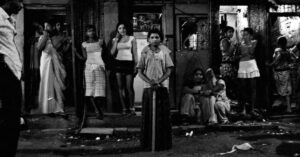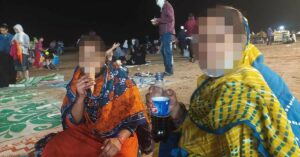Indrani Sinha Took on Bengal’s Prostitution Mafia to Rescue 2000+ Minors!
Despite multiple threats to her own life, she never backed down. Nearly five years after her untimely passing, The Better India pays tribute to this unique soul.
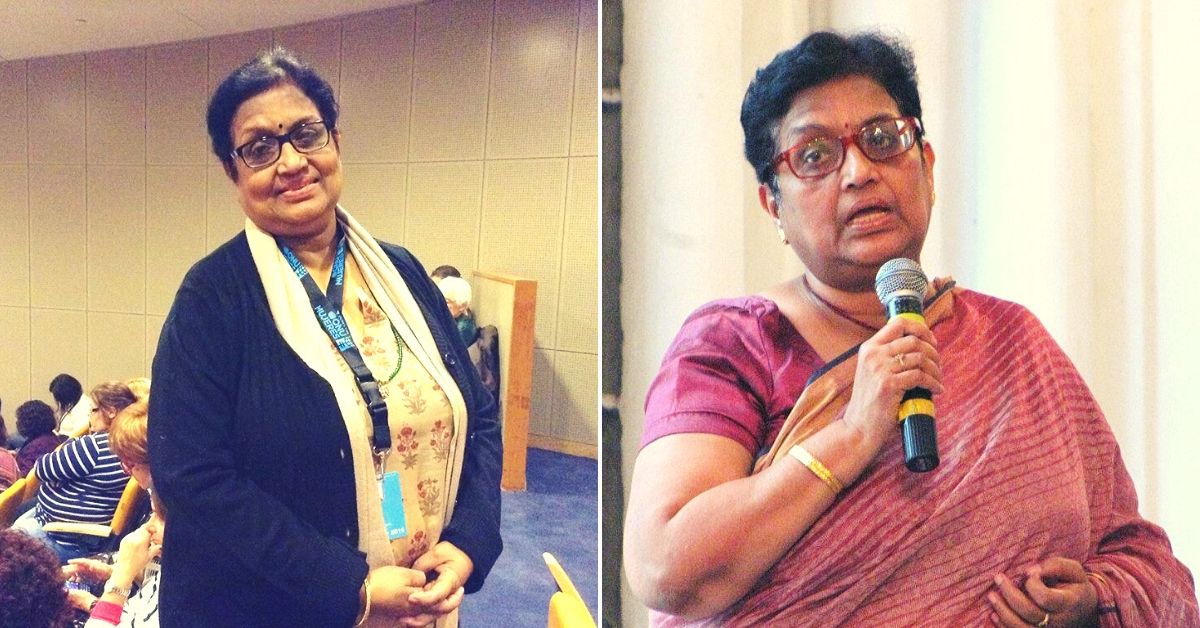
On 22 August 2015, Indrani Sinha, one of India’s foremost crusaders against human trafficking, passed away at the age of 65 following a heart attack.
Tirelessly working for the most vulnerable through her organisation Sanlaap, she brought love, dignity and a sense of security into the lives of thousands of young women and children who were once trapped by the horrors of human trafficking.
Despite receiving multiple threats to her life, she never backed down. Nearly five years after her untimely passing, The Better India pays tribute to this unique soul.
Early life of struggle, finding her way
Born on 15 March 1950, in Kolkata, Indrani had to grow up faster than most. Her father, by all accounts a decent man, could never find a steady job. As a consequence, by the age of 17, she was compelled to balance her academics and run a household.
Married off at a young age of 23, she had a son the following year. Unfortunately, that marriage did not last long, and she soon left him, along with her young son.
“I met Indrani in 1979; we were both working in an international agency called the Mennonite Central Committee. At the time, she was providing not just for her son but also her parents, younger brother and sister. Before 1979, she had worked as a teacher in a private school and an organisation named TDH (Terre des hommes),” says her second husband, Pinaki Ranjan Sinha, who now serves as the Executive Director of Sanlaap.
After working with MCC for about two years, she joined the Oxfam India Trust. During her three-year stint in Oxfam, Indrani was working on women issues and women empowerment with various organisations throughout the country that were in partnership with the non-profit.
Following her stint there, she started her own consultancies that were mainly focused on women’s rights issues.
“In one of her consultancy assignments to South 24 Parganas, she was to ascertain the status of women who were fry catchers and stumbled upon the appalling economic condition of their families. The men almost did nothing to earn and took whatever little the women earned from selling fries to middlemen. She also found out that many young children (mostly girls) and women from the village had gone missing. They told her that most of them were taken to the big city (Kolkata) and were never heard from since,” he says.

Sanlaap: Speaking up for those who cannot
What followed was the creation of Sanlaap (‘Dialogue’) in 1987, a non-government organisation to combat trafficking in persons for any form of exploitation.
Formally established in 1989, Sanlaap was the medium through which she would speak for those who couldn’t. The NGO works for minor trafficked victims, women in prostitution, vulnerable women and young girl children in the red light areas and victims of commercial sexual exploitation in the various districts of West Bengal. It also works for the rescue, rehabilitation, restoration and repatriation of minor trafficked victims.
The first study she conducted in 1989-90 on sexually-abused children took her to the brothels of Kolkata and the city’s suburbs. There, she met hundreds of young women and girls, who spoke of their horrific plight and total lack of agency.
She heard their stories of exploitation, how they were deceived into the profession, poor health conditions and torture. She heard how they had little choice but to accept this misery because of the stigma attached to their profession, the lack of legal protections and fear of a tyrannical prostitution mafia.
In a 2006 interview, Indrani talks about what she learnt from her conversations.
“When I started in 1989, I did not have any role models from whom I could learn. Therefore, our mode of functioning was to learn from the women in red-light areas, listen to their needs and work on them. That is how we have moved on our path. Our philosophy has changed along the way. Now we do not call the women ’sex workers’, but ‘women in prostitution’. Now we know that they did not have any agency or choice to be there, and the traffickers have exploited their vulnerability and put them there,” she said.
Back in the 1990s, Sanlaap’s child protection initiatives were singularly focussed on children born in red light areas (RLAs). Initially, it was a community-based programme. After a while, the need for institutional care was felt, and a shelter home for vulnerable girl children from the RLA’s was established in 1992.
Since then this programme has continued successfully.
“At the end of 1995, a different need was felt; it was learning from the process. The idea of a holistic approach started being discussed. The significant event was [the] rescue of minor girls from forced prostitution in other states of India by the police, who were produced before the judiciary for restoration. The system was not at all encouraging. In many cases, the children were handed over to fake parents and were re-trafficked. As a recognised institution under the Juvenile Justice Act, Sanlaap started conducting Family Identification and restoration of these girls. A need was felt to reach the source areas, learn the trends of migration and trafficking and implement an effective prevention programme,” states the organisation on its Facebook page.
By the following decade, the non-profit began directly intervening in two districts—South and North 24 Parganas—through inspired volunteers trained by them. But there was a feeling among those in Sanlaap that they needed to reach places where each girl was restored.
“From our restoration records nine districts were identified, the (North & South) Parganas, Nadia and Murshidabad in South Bengal and Malda, Uttar Dinajpur, Jalpaiguri, Cooch Behar and Darjeeling in North Bengal. While choosing the intervention areas we had kept in mind the Indo-Bangladesh and Indo-Nepal borders and specific vulnerable areas like NJP (New Jalpaiguri) Railway Station, RLAs of Murshidabad, [the] island of Bhootni in Malda, tea gardens of Jalpaiguri and Darjeeling, Tribal Forest villages of Alipurduar, border entry points of Bangladesh, Bhutan and Nepal,” it adds.
Thus far, Sanlaap has rescued more than 2,000 minor trafficked victims and rehabilitated more than 10,000. Sanlaap has been running several shelter/rehabilitation homes in West Bengal.
During their stay before repatriation or restorations take place, these girls are given support for their education, vocational training, skill development, dance and music training, self-defence and working in various income-generating programs.
“Depending on the skills of each individual, Sanlaap admits them to mainstream schools. On attaining majority, Sanlaap provides employment opportunities to various institutions, also in-house to earn a living,” adds Pinaki Sinha.
In the 1990s, the organisation ran shelters in different parts of West Bengal. But later on due to administrative and other issues Sanlaap started operating from one shelter which is SNEHA at Narendrapur, South 24 Parganas.
“In this shelter, we house almost 130-150 trafficked girls. Additionally, we also run a crisis centre in the heart of Kolkata (Khidderpore) where we house almost 20 small children up to the age of 14 who are the children of women in prostitution. This is a 24×7 shelter, and they are given all forms of support so that they can continue to grow up in mainstream society. Sanlaap also has a very innovative project through which we run a shelter/hostel for survivors of commercial sexual exploitation, where they are now studying law, social welfare and the police service. This year our first budding lawyer will graduate and in the coming years, we will have more lawyers passing through our system,” says Pinaki Sinha.
Over the years there have also been thousands of girls who have been rescued, reintegrated and repatriated to countries like Bangladesh and Nepal thanks to Sanlaap.
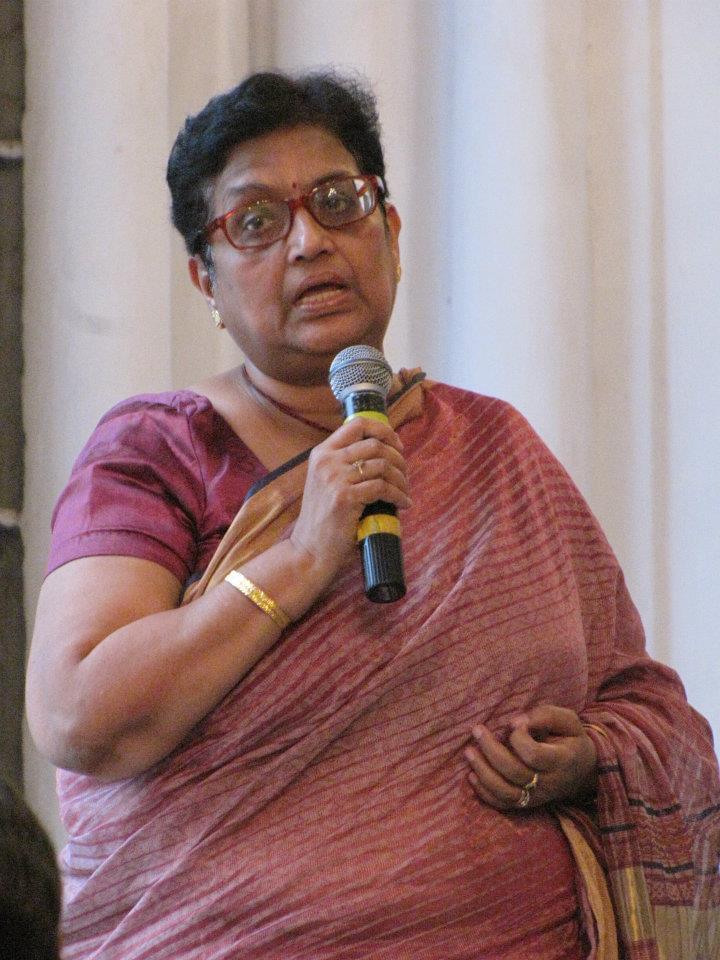
At the core of their work, however, is the power of collaboration, particularly with partner organisations that can reach and engage with those vulnerable communities, and of course collaborating with State and Central government agencies.
“We work very closely with them on the common issues related to our work and collaborating with them in implementing activities. Sanlaap also provides legal training on anti-trafficking to various law enforcing agencies like the police and BSF and SSB. We work with all the border areas of Nepal and Bangladesh on cross border trafficking issues,” he adds.
Speaking to The Better India, Hasina Kharbhih, the founder of Impulse NGO Network, a major organisation battling the scourge of human trafficking in the Northeast, talks about her collaboration with Sanlaap.
“Indrani and I regularly shared insights on both curbing trafficking and ensuring livelihood for rescued women and children to prevent re-victimization. She was always keen on establishing a partnership of the livelihood initiatives established by our respective organisations in order to arrest the plague of human trafficking. I am glad that even after her death, we have been able to honour her wishes and fulfil her dream. My visit to Sanlaap last year and my ongoing communication with the present leadership have paved the way for ISE and Sanlaap to work together. Currently, mapping exercises are being conducted and the conversation is being taken forward on broadening the economic initiatives,” says Hasina.
In its three decades of existence Sanlaap has received multiple accolades, ranging from the National Award for Child Welfare for the President of India in 1997 and a National Commission for Women award in 2000. In 2003-04, she was invited by the United Nations to work for their mission in Kosovo as well.
However, there were difficulties as well. Naturally, in challenging the might of the prostitution mafia in West Bengal, she received numerous threats.
“We were only 8 and 9 respectively when my sister and I were sent to a boarding school in Andhra Pradesh called Rishi Valley School because she often got calls threatening our abduction,” recalls her daughter Oindrila, in this moving Facebook post.

Prostitution: Legal or not?
Unlike many advocates of legalising prostitution, Indrani believed that the very idea was a non-starter. “Would we advocate that child labour be legalised just because it exists? A form of violence cannot be accepted merely because it is there and has been for centuries; the basis of its existence needs to be challenged,” she said in the 2006 interview.
“Before we speak on the issue of legalisation of prostitution, we need to recognise prostitution for what it is: a situation which begins with rape and a choiceless choice, and continues with denial and exploitation,” she adds.
Indrani was a complete non-believer of legalisation of prostitution. She believed that if governments legalised prostitution, it would strengthen the hands of pimps and traffickers.
“She did not believe it to be ‘work’ and hence chose to never use the term ‘sex worker’ and always addressed them as ‘women in prostitution’. She professed anti-legalisation and advocated the same all over the world. She got a lot of support for the same,” says Pinaki.
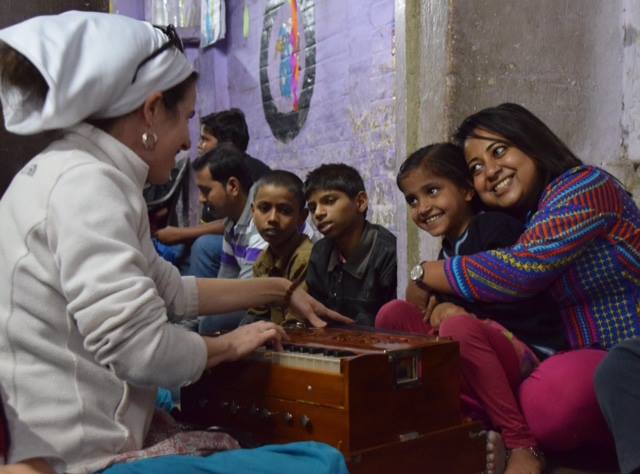
Legacy
Till her untimely passing, Indrani continued working and travelling the world, spreading awareness about human trafficking and expending all her energy to help vulnerable girls and women.
“She had been involved in the fight against human trafficking longer than I had and admired her a lot for the work she was doing. I will remember Indrani as a strong and motivated woman who never gave up. Her energy, determination and far-sightedness have always resonated with me and her dedication to the cause remains an inspiration,” says Hasina.
“She wanted and somewhere from above still wants and hopes for everyone to understand and fight against human trafficking. And the fact that it is NOT okay. We strive to work harder and take her belief forward. She inspires us, and we know she will be proud of us for taking this forward,” says Sinha.
It’s a sentiment his daughter Oindrila, who also works with Sanlaap, echoes as well. “On 22 August 2015, she breathed her last, but that did not stop us from taking her work forward. We strive to work harder and hope that somewhere from there above, she is watching us and will be proud of us. She inspires us every day,” she says.
Also Read: This Shillong-Based NGO Has Saved Over 72,000 Victims of Human Trafficking!
(Edited by Gayatri Mishra)
Like this story? Or have something to share? Write to us: [email protected], or connect with us on Facebook and Twitter.
This story made me
-
97
-
121
-
89
-
167
Tell Us More
If you found our story insightful, informative, or even just enjoyable, we invite you to consider making a voluntary payment to support the work we do at The Better India. Your contribution helps us continue producing quality content that educates, inspires, and drives positive change.
Choose one of the payment options below for your contribution-
By paying for the stories you value, you directly contribute to sustaining our efforts focused on making a difference in the world. Together, let's ensure that impactful stories continue to be told and shared, enriching lives and communities alike.
Thank you for your support. Here are some frequently asked questions you might find helpful to know why you are contributing?






